A plant parent shouldn’t have a favorite, but I do, and it’s 100% the Lemon Button Fern.
She’s the little sibling of the Boston Fern, and she’s literally as cute as a button!
Named for the small, round leaves and the unique lemony scent that’s released when they’re crushed (though I must add that this is rumored, only a monster would try it out themselves…).
Thankfully, despite its delicate aesthetics, Nephrolepis cordifolia ‘Duffii’ is a surprisingly resilient plant. Its hardy nature and forgiving temperament make it a great fit for homes and terrariums alike.
But where it really shines is its versatility.
So, let’s see why.

Where to Buy the Lemon Button Fern
See the links below to purchase from reputable terrarium plant shops and marketplaces (may include affiliate links).
Lemon Button Fern Care
| Plant Type | Fern |
| Lighting | Medium-high indirect light |
| Temperature | 65-80°F (18-26°C) |
| Watering | Regular, even moisture |
| Humidity | High humidity (60-90%) |
| Growth | 4-12 inches |
Growth
‘Duffii’ pronounced “duff-ee” like “fluffy,” is a dwarf variety of Nephrolepis cordifolia – meaning it will stay cute and dainty throughout its entire life, rarely growing taller than a foot high.
Honestly, that’s what makes it perfect for brightening up a small corner in your home or snazzing up a terrarium project.
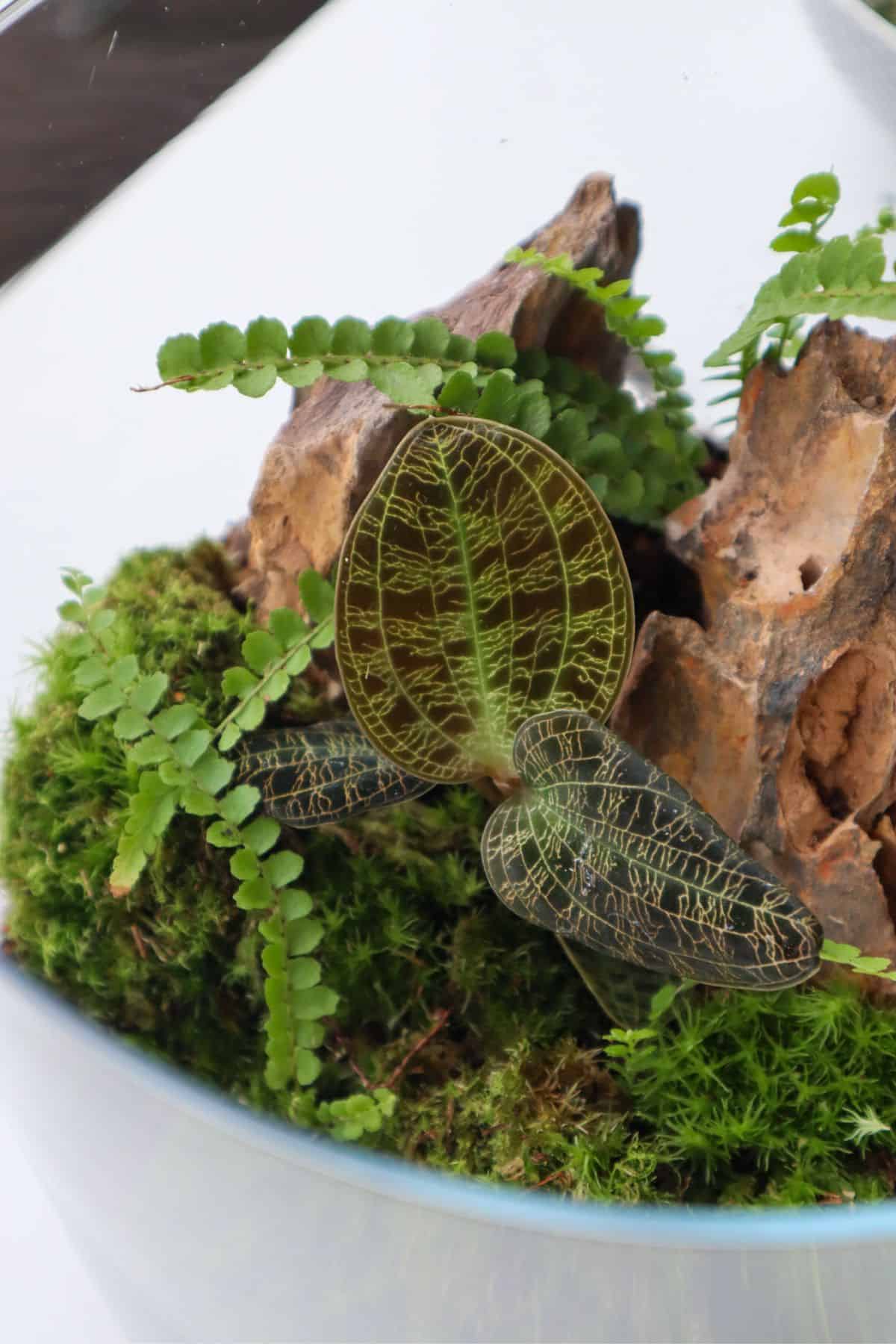
They can go just about anywhere, even your bathroom (don’t worry, they’re pet-safe, too!).
Instead of the long pinnae you see on most Boston Ferns (the scientific name for a fern’s leafy bits), the ‘Duffii’s are beautifully button-shaped. Making for a fabulously bushy, bright-green plant.
They still grow with the characteristic arching pattern of their larger cousins, just in a much more compact form.
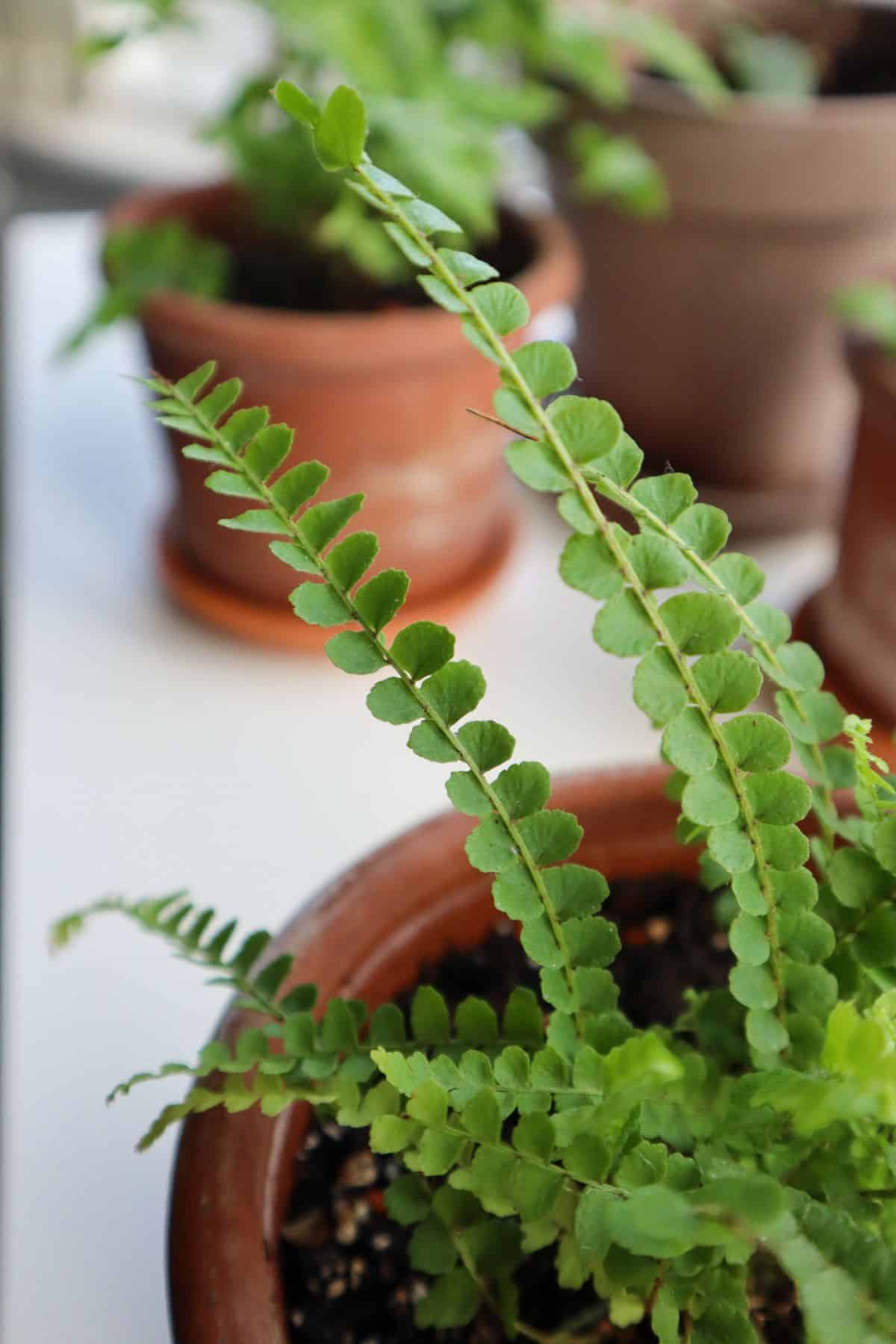
Watering
For a tropical fern, the Lemon Button isn’t overly demanding.
That said, she’s quite a thirsty gal and will grow best with regular, even moisture.
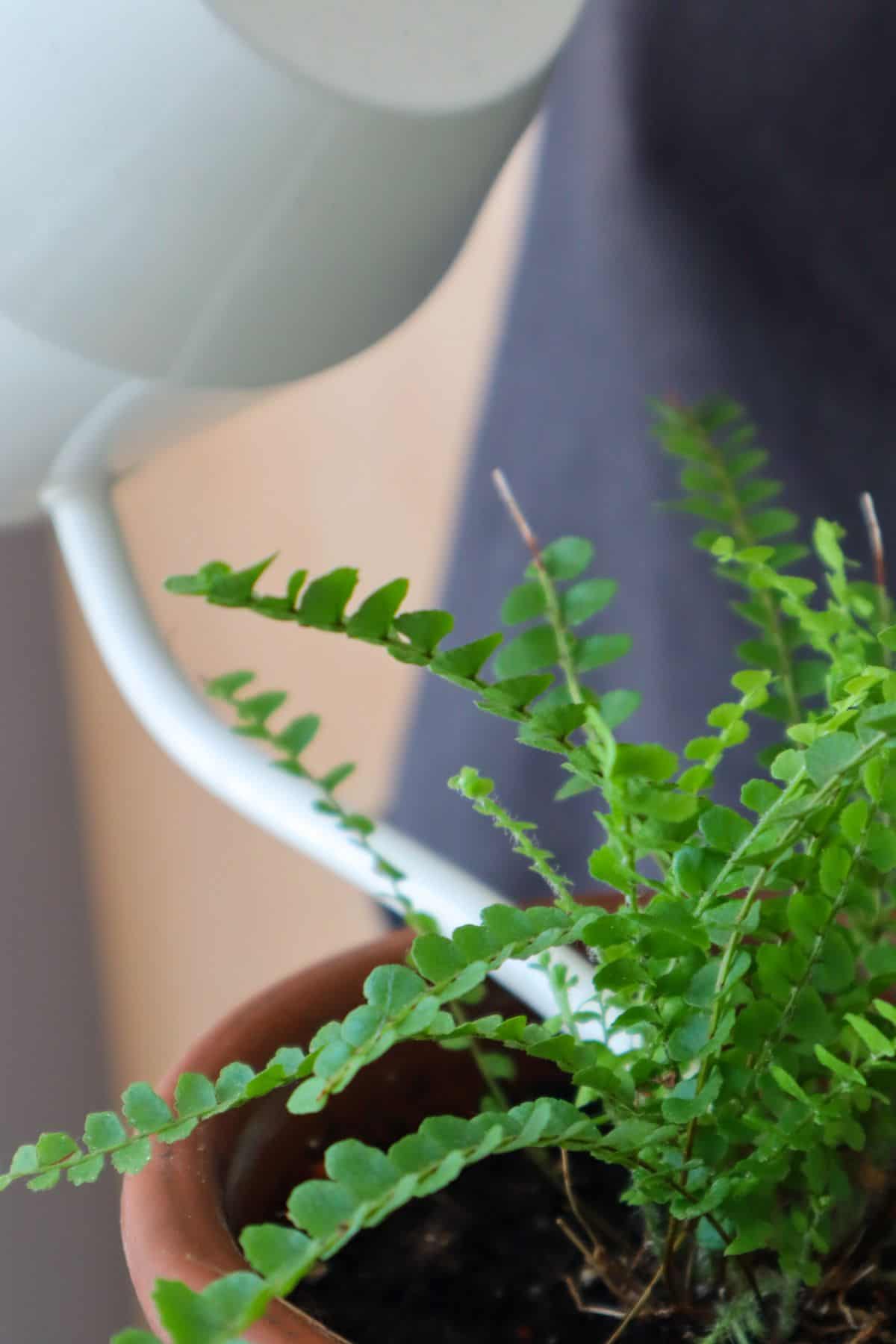
That’s why proper drainage is essential. I water until I see excess dripping into the drainage tray and tip away the excess.
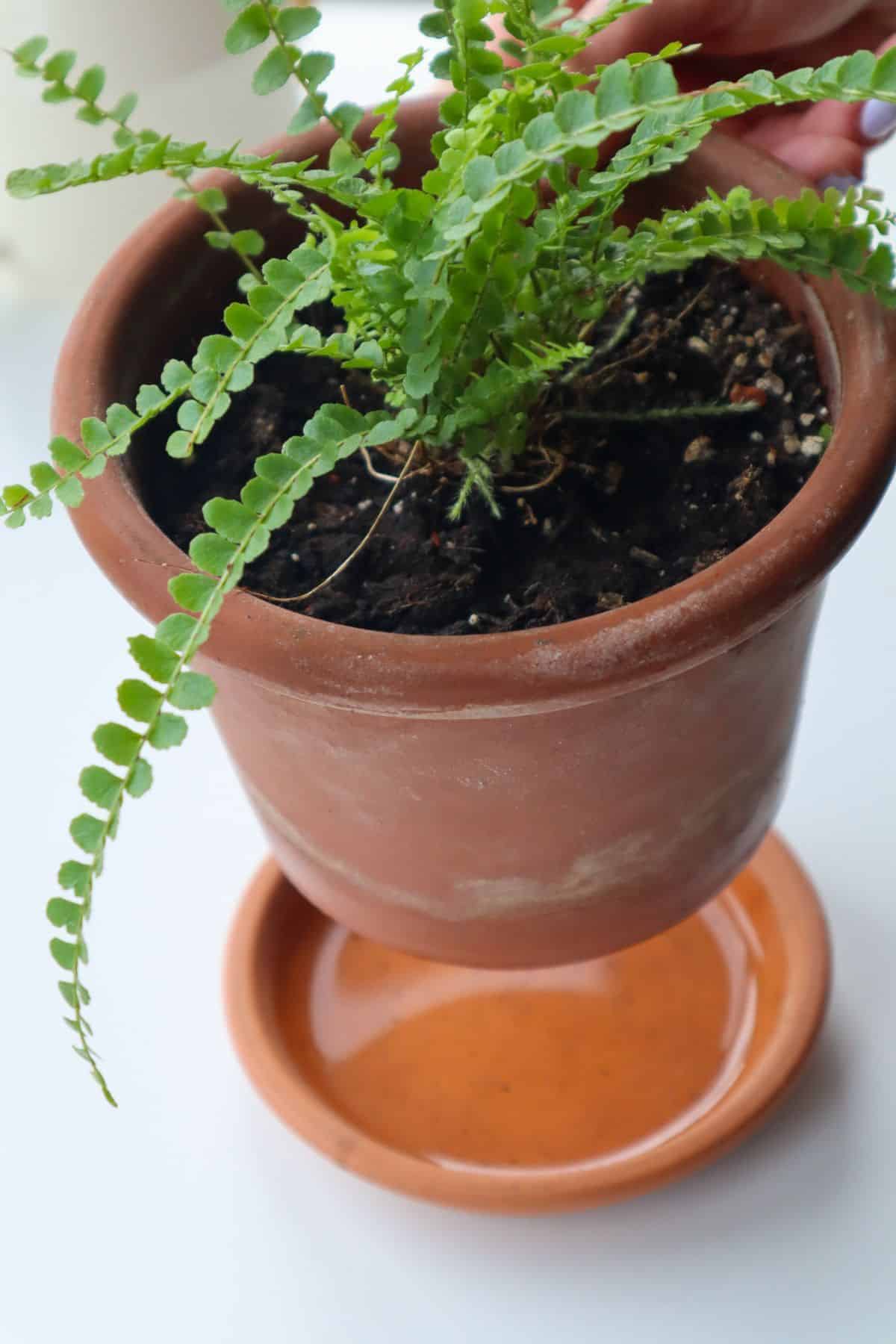
If you’re putting your plant in a terrarium, start with a few sprays of water so you don’t overwhelm the system. It should have no problems adapting to a healthy water cycle.
Substrate
This baby has shallow but dense roots, so getting the soil mix right is key for it to thrive.
After all, the Lemon Button Fern is a tropical plant, so root rot is always a risk.
It likes constant moisture but doesn’t do well if buried in a soggy substrate, making it important to pick a nutrient-rich substrate that retains moisture but also drains well.
Coco coir is a perfect base; it’s light, spongey, and stays moist. Add something like orchid bark or charcoal for drainage, and you’ve got a winner.
👉 Our tropical terrarium substrate mix is a great fit here.
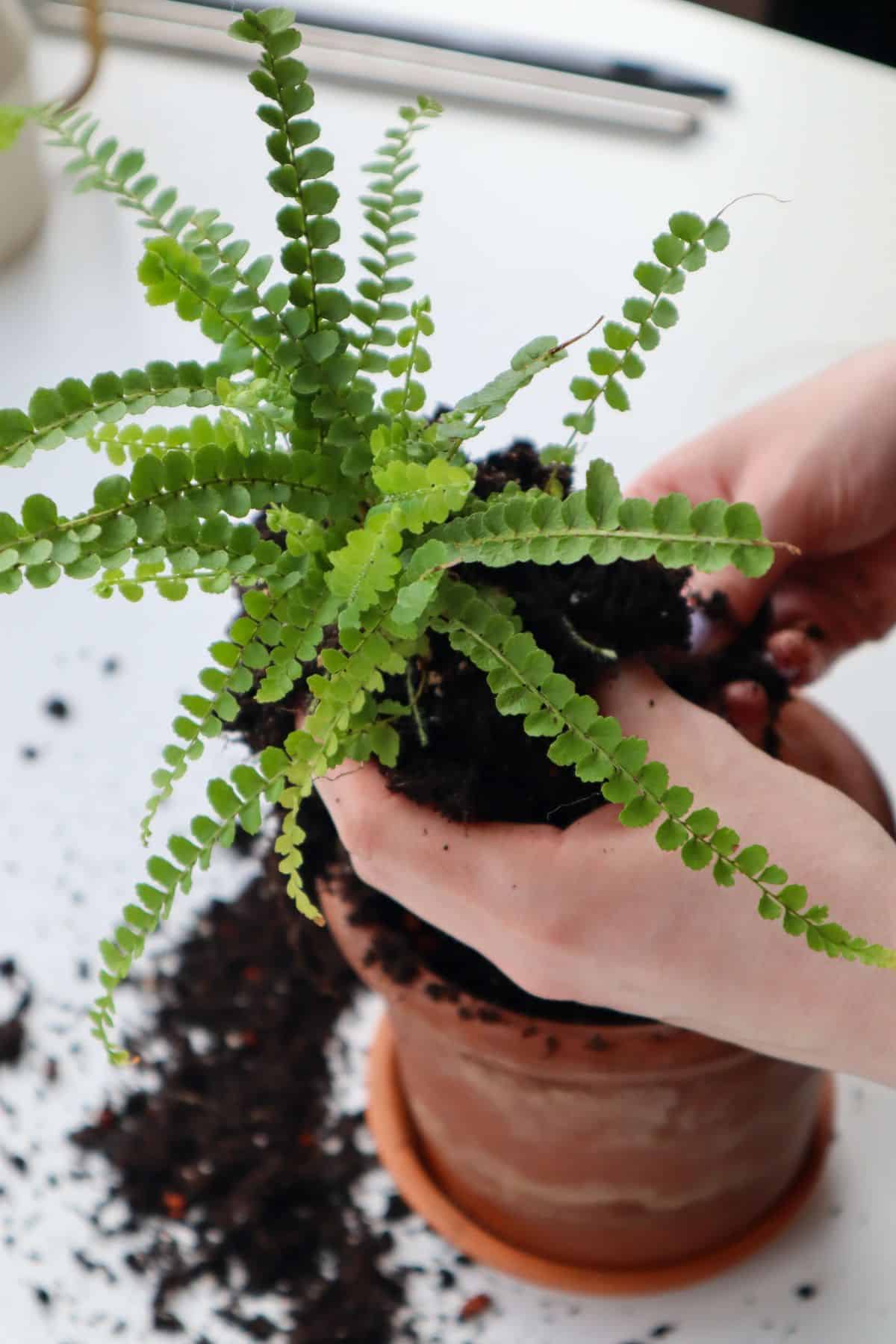
Lighting
The Lemon Button Fern grows natively across the Americas, Asia, and Australia, terrestrially on the forest floor and epiphytically in nooks and crannies of host trees.
In the context of light conditions, this means that this plant grows underneath the canopy, in the shade.
So bright but indirect light is the gold standard, but it can tolerate a range of conditions.
- It should hold up fine in low light; just expect slower growth.
- At the other end of the scale, it’s absolutely able to tolerate some direct sunlight.
Nephrolepis plants are everywhere in South East Asia – even in the scorching sun – so don’t worry if your plant gets a few hours here or there.
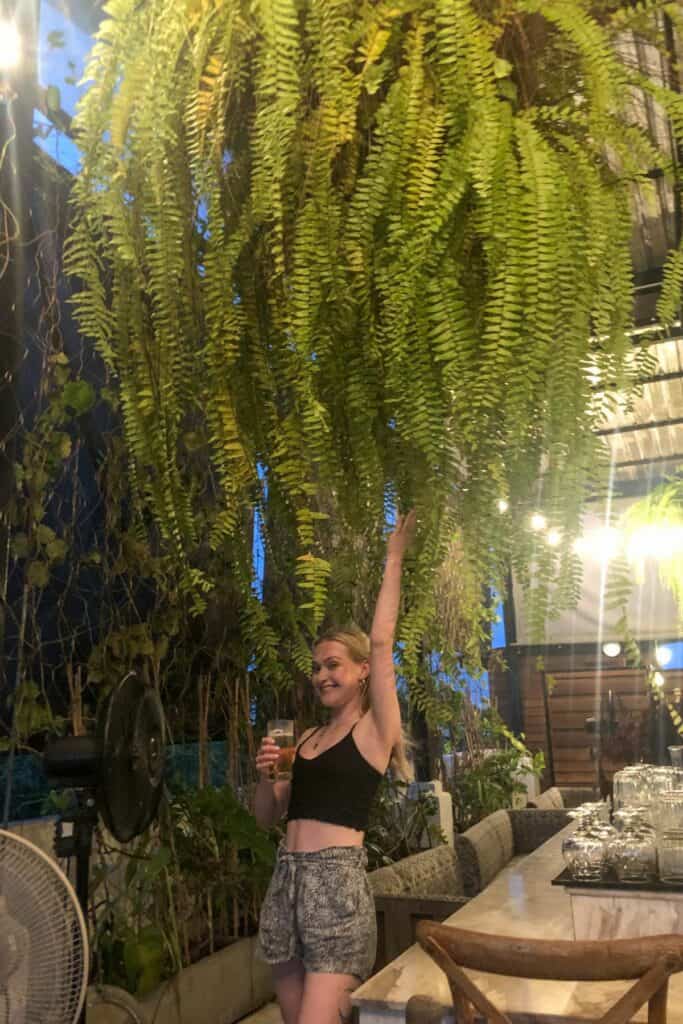
Temperature & Humidity
If there’s one thing me and the Lemon Button Fern have in common, it’s that we both enjoy a hot and humid environment.
It’ll grow comfortably in the 65-80°F range but prefers temperatures on the higher side if possible.
Getting the humidity levels right, however, is a little more critical.
If it drops too low, you could see crisping or brown fronds. If this happens, remove any damage and boost your humidity. It could tolerate anything as low as 50%, but I’d aim for a minimum of 60%.
Of course, a natural solution to this problem is to use it in a closed terrarium setup.
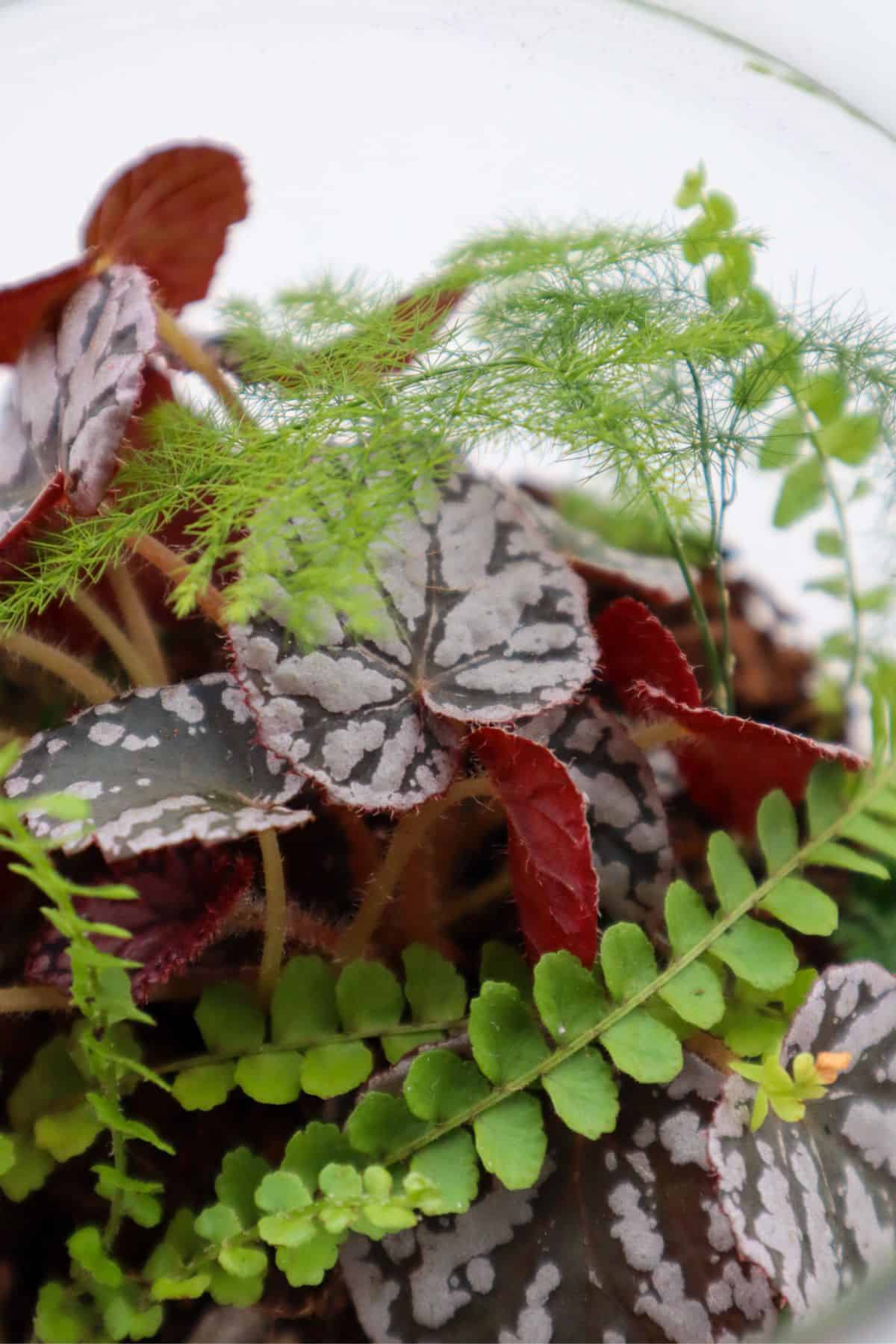
Propagation
Most plant people will argue that splitting ferns is awful. It’s all too easy to accidentally tear away roots and ruin your precious plant.
Well, my experience with the Lemon Button Fern has been anything but. I’ve found they come away much more easily than with other plants.
When your plant is relatively mature, tease away a rooted rhizome section with your fingers. Ta-da!
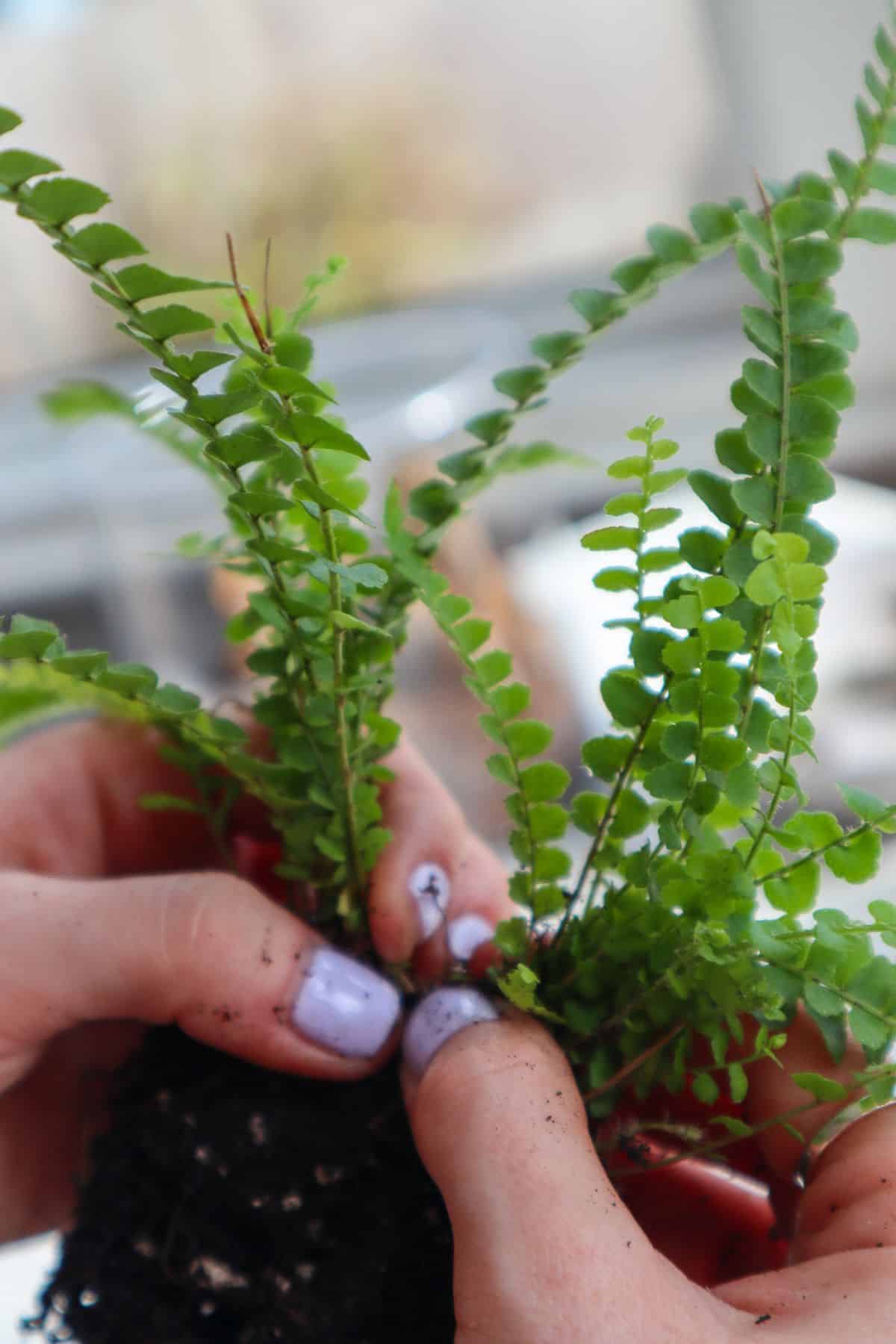
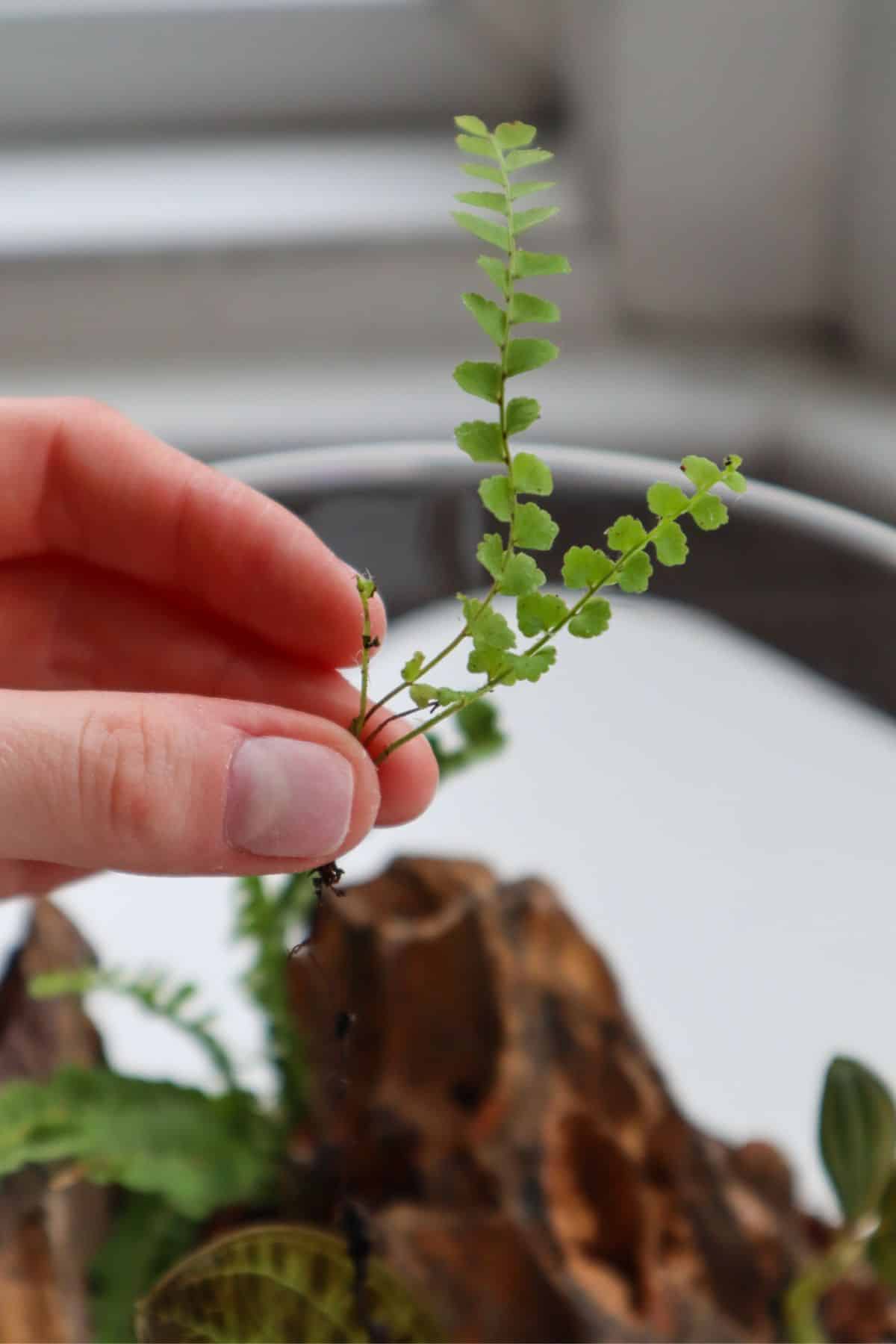
You can also propagate your plant by trimming off any baby ferns that sprout from the ‘runners.’ You’ll easily identify the runners if you see them, long tendrils that ‘run’ from the base of the parent plant.
Varieties & Similar Plants
The Nephrolepis genus is jam-packed with around 30 stunning species.
But as you’ve seen, many of them can get titanic in size.
So, if you’re looking for another petite variety, I highly recommend the Nephrolepis exaltata ‘Fluffy Ruffles‘ (which is absolutely as cute as it sounds).
It gives major Sword Fern energy but in a tiny, adorable package that will never grow too large.
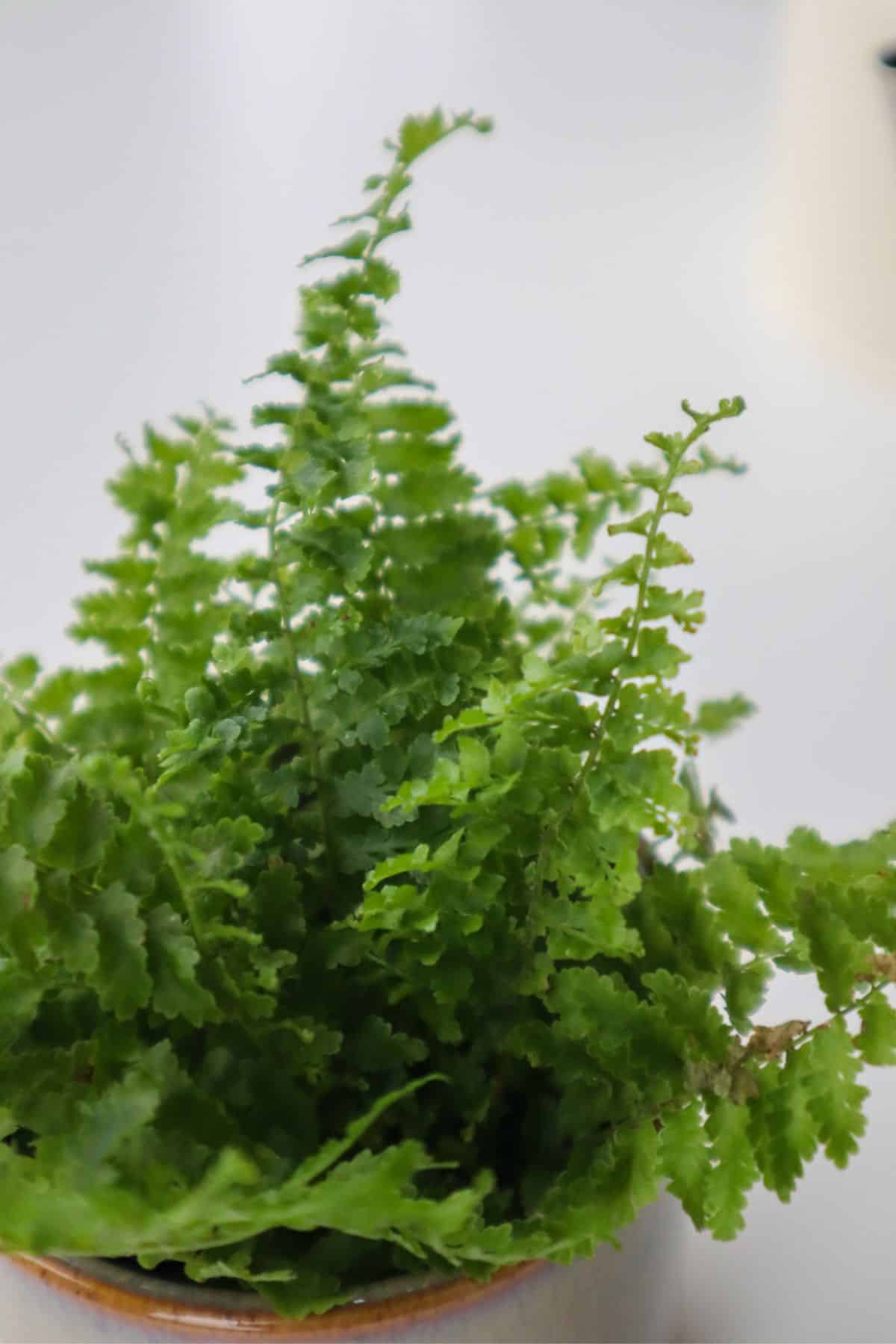
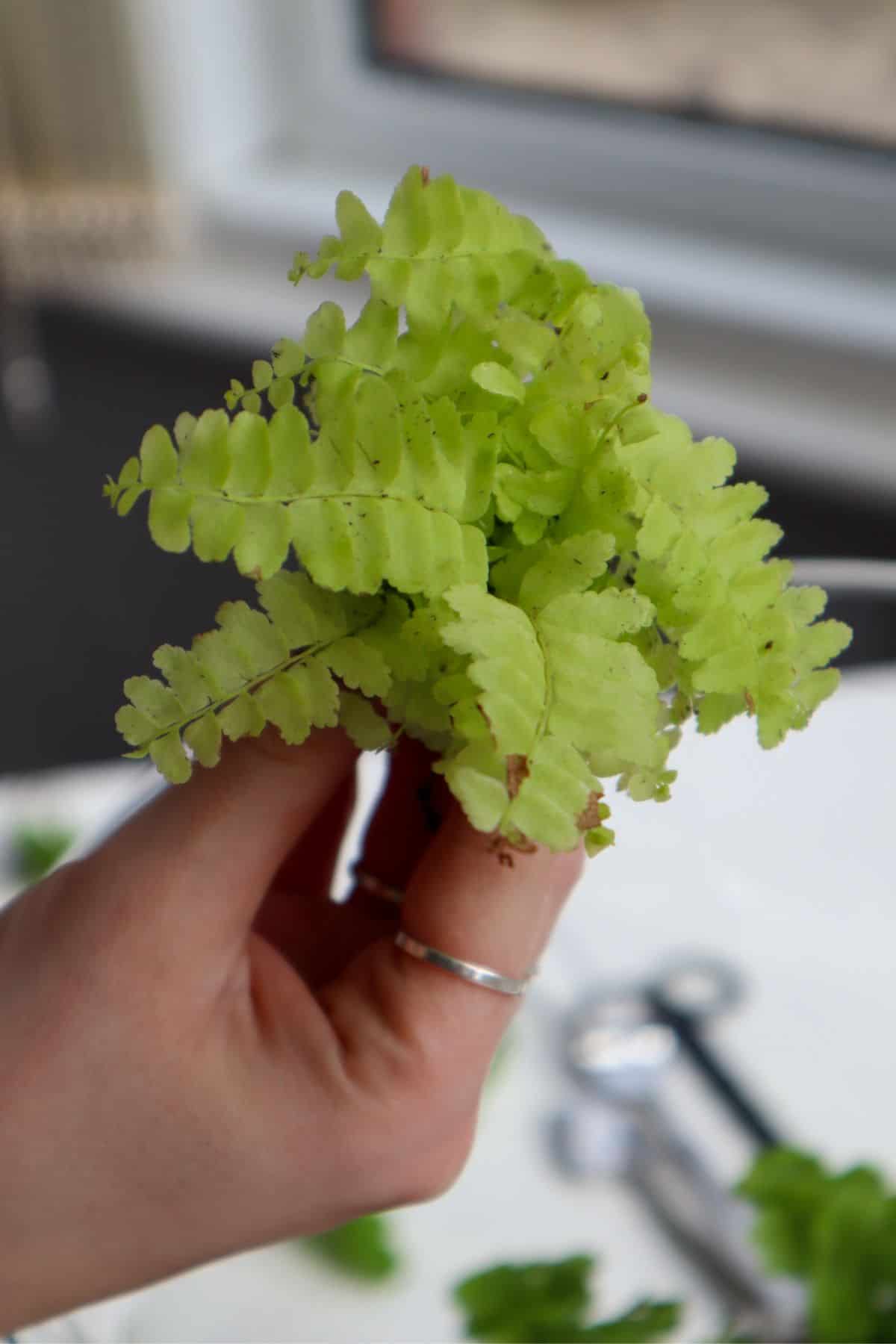
For more sword-fern energy, check out the wonderful lance-shaped leaves of Polystichum Tsus-simense (the Korean Rock Fern).
Pellaea rotundifolia is always worth a look, too.
In the battle of the Button Ferns (Lemon Button Fern vs Button Fern), there’s not much in it. They’re both small, cute, and relatively easy to care for. It largely depends on whether you want more of an upright growth pattern or a trailing one.
